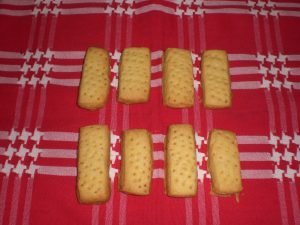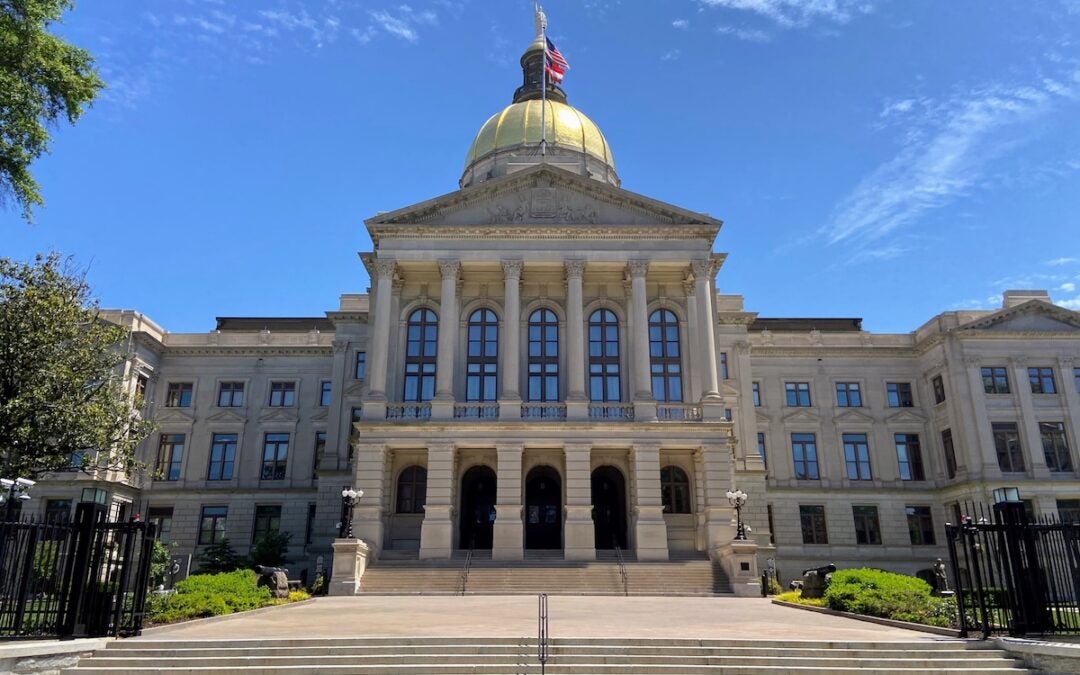One of my real trepidations about going to Scotland the first time was haggis.
According to ancestry.com, my bloodline is more than 80 percent Scottish and Scots-Irish. I sort of felt like that obligated me at least to try haggis. But I have never been a fan of organ meats, and the thought of them ground up, mixed with oatmeal and stuffed in a sheep’s stomach . . . well, let’s just say I wasn’t looking forward to the experience.
Nevertheless, as would any true Scot, when my husband and I went to the pub for dinner our first night in Glasgow, I girded up my courage and, well, actually, maybe my courage failed me a bit, ordered haggis bites – little balls of breaded and fried offal and oatmeal. They weren’t awful.
I always think about that experience when I start getting ready for our annual Burns Night dinner each January. Burns Night, Jan. 25, celebrates the birth of Scotland’s most famous poet, Robert Burns, the bard who gave us “Auld Lang Syne,” that song we all sing every New Year’s Eve at the stroke of midnight.
One of the highlights of any Burns Night is the piping in of the haggis. There’s a very precise order in which events must unfold at a Burns Night supper. The haggis is piped in after the Selkirk grace is said. Burns is supposed to have prayed this prayer before a meal when he was visiting the Earl of Selkirk. It goes like this:

Some hae meat and canna eat,
And some wad eat that want it,
But we hae meat and we can eat,
Sae let the Lord be Thankit!
Piping in a haggis is quite an involved ceremony. You have the piper who leads the way into the dining room followed by the knife and fork bearer who brings the carving knife and fork followed by the most important person of the parade – the haggis bearer – followed by the whisky bearer who pays the haggis bearer with a wee dram of whisky.
The knife and fork bearer cuts into the haggis with great gusto, but not until someone heaps praises on the offal concoction with a very formal, very serious, “Address to the Haggis,” one of Burn’s more famous poems. The first verse goes:

Fair fa’ your honest, sonsie face,
Great chieftain o the puddin’-race!
Aboon them a’ ye tak your place,
Painch, tripe, or thairm:
Weel are ye wordy o’ a grace
As lang’s my arm.
If that reads like Greek to you, believe me, I understand. It doesn’t sound like anything that would come out of an English speaker’s mouth – although the poem is, actually, in English. It’s just a highlander’s version of English. Here’s a translation:
Good luck to you and your honest, plump face,
Great chieftain of the sausage race!
Above them all you take your place,
Stomach, tripe, or intestines:
Well are you worthy of a grace
As long as my arm.
Once the haggis is sufficiently praised and welcomed, the rest of the dinner can proceed. Traditional fair could include salmon or a roast of venison or beef, vegetables, whisky, and desert. The traditional vegetables are potatoes and parsnips, but really, so long as you have potatoes, it’s fine to substitute another vegetable since parsnips can be hard to find.
After the meal come the toasts – to the president (or, if you’re in the UK, the queen), the military branches, the ladies and the gentlemen. Those last two can get quite rowdy, depending on who’s giving them as they offer an opportunity to argue over which sex is superior.
The culminating event is the speech to the immortal memory of Robert Burns. That oration recognizes Burn’s many contributions to Scotland, to poetry, to women, to populating Scotland . . . but I digress.
A Burns Night supper is a great way to liven up a long, cold, dreary January, and so most years, we’ve either gone to one sponsored by a St. Andrews Society chapter, or we’ve hosted one at our house. This year, because of COVID-19, hosting at home was necessary. I recruited my friend Vickie, who’ll be joining me in writing this column, with whom I do a lot of cooking, anyway to help with the preparations. We put together a menu and had our grand celebration a little early. My usual piper wasn’t able to join us – my family and Vickie’s formed a COVID-19 pod back in March when the first lockdown occurred – so we made do without.
[adrotate banner=”17″]
Vickie, like me, as a little spooked by the idea of haggis, so we found a brilliant solution – vegetarian haggis. You can order it online, and let me tell you, it is way better than the authentic meat kind. We found great recipes for our celebration: haggis Wellington, salmon with whisky sauce and vegetables, and for dessert, we had Scottish shortbread, which is so easy to make but totally decadent with a whole cup of butter in it.
We were able to find what we considered to be an elegant solution to the haggis problem – vegetarian haggis. Not only was vegetarian haggis a more palatable option than real haggis, Vickie’s stepmother is a vegetarian, and we wanted an entre that would work for her.
We settled on vegetarian haggis Wellington, and it exceeded our expectations. You mix the haggis with chopped mushrooms and diced spinach for an earthy, robustly flavored filling wrapped in a puff pastry crust – we, not being purists, used store-bought puff pastry sheets. You can make your own vegetarian haggis, but we didn’t want to go to that much trouble, so we ordered ours from Amazon.
For the rest of the family, we made baked salmon and topped it with a whisky-butter sauce for a Scottish take on our favorite fish. You can also poach or broil the salmon, depending on how your family likes it.
If you’re interested in doing a Burns supper, just as an excuse to add a festive feeling to our isolated and socially distant January, you can find instructions online for every step. You can always use bagpipe music from YouTube for the piping in of the haggis – and probably even a recording of the major speeches and toasts for the night if you’re not feeling up creating your own.
You can also find online instructions for Burns Night decorations. I once even went so far as to make place cards for my guests emblazoned with their family crests and with the Scottish national flag (yellow field with a rampant red lion).
But no Burns Night is complete without a lovely Scottish dinner. We kept ours simple but added some Scottish touches for a bit of authenticity, and we share our recipes for those touches below.

Vegetarian and Mushroom Haggis
6 oz. portabella mushrooms
1 Tbs. oil
1 can vegetarian haggis, crumbled
2 sprigs fresh thyme (leaves only)
2 large hands-full of spinach, diced
1 package puff pastry sheets
1 Tbs. milk for glazing
In a skillet, cook haggis, mushrooms and spinach until mushrooms are done and spinach is wilted. Let cool. Roll out pastry rectangle to approximately 11×16 inches. Add haggis mixture to center of rectangle in the shape of a log. Fold the short ends of the pastry up over the filling, then the long sides. Seal by pressing the pastry together.
Turn onto a greased baking sheet. Cut several slits in the top and brush with milk. Bake at 375 degrees F for 35-40 minutes or until the pastry is browned. Cut into slices and serve.
Whisky-Butter Sauce
3 egg yolks
1 Tbs. lemon juice
1 stick butter
3 Tbs. Scotch whisky
3 Tbs. water (we used three more tablespoons of whisky as a substitute for water)
Whisk egg yolks and lemon juice together in a saucepan. Whisk over low heat. Cook until mixture begins to thicken. Stir in butter gradually, allowing to melt between additions of about 1 teaspoon at a time. Once the butter has been incorporated, remove from heat and add whisky and water (or just whisky if you choose our substitution). Serve poured over salmon.
Serve the salmon with roasted diced potatoes and asparagus. You can cook both in the oven on a cookie sheet. Mix each with about a tablespoon of olive oil, salt and pepper to taste. Bake the potatoes at 425 degrees F. for about 30 minutes or until golden brown. Bake the asparagus at the same temperature for abut 20 minutes.

Scottish Shortbread
2 c. all-purpose flour
½ c. sugar
2 sticks butter, at room temperature
Place all ingredients in a large bowl and either beat with a hand mixer or mix together with hands until you have a sticky dough. You get better results from using your hands as their heat melts the butter just enough to really get it incorporated into the sugar and flour. Pat the dough in an 8×8 brownie pan or, if you’re brave, a fancy patterned shortbread pan. Be sure to grease and flour the shortbread pan thoroughly or you’ll never get the shortbread out without breaking it in crumbs. If you use the 8×8 pan, cut the shortbread into fingers before baking. Prick shortbread with a fork to let steam escape during baking. Bake at 350 degrees F for about 25 minutes or until edges just start to turn brown. Remove from oven and let cool for about 10 minutes before turning shortbread onto a cooling rack if using the shortbread pan. If using the 8×8 pan, slice the shortbread after about 10 minutes, but leave it in the pan until cooled completely.
Alba gu bràth!
Debbie Reddin van Tuyll is Editor-in-chief of The Augusta Press. Reach her at debbie@theaugustapress.com
[adrotate banner=”17″]















